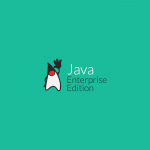Messaging Concepts Introduction
Messaging is a method of communication between software components or applications.
- A messaging system is a peer-to-peer facility
- A messaging client can send messages to, and receive messages from, any other client.
- Each client connects to a messaging agent that provides facilities for creating, sending, receiving, and reading messages.
- Messaging enables distributed communication that is loosely coupled.
- A component sends a message to a destination, and the recipient can retrieve the message from the destination.
- The sender and the receiver do not have to be available at the same time in order to communicate.
- The sender does not need to know anything about the receiver; nor does the receiver need to know anything about the sender.
- The sender and the receiver need to know only which message format and which destination to use.
- Messaging also differs from e-mail.
- E-mail is a method of communication between people or between software applications and people.
- Messaging is used for communication between software applications or software components.
Message-Oriented Middleware (MOM)
Message-oriented middleware is a software application or messaging agent that provides facilities for creating, sending, receiving, and reading messages synchronously or asynchronously between system components.
A client which produces the message is called a producer and the client which receives the message is called a consumer. All the messages sent are stored in a particular location which is called a destination.
Some MOM products: IBM Web-Sphere MQ, ActiveMQ, and Oracle Advanced Queuing.


